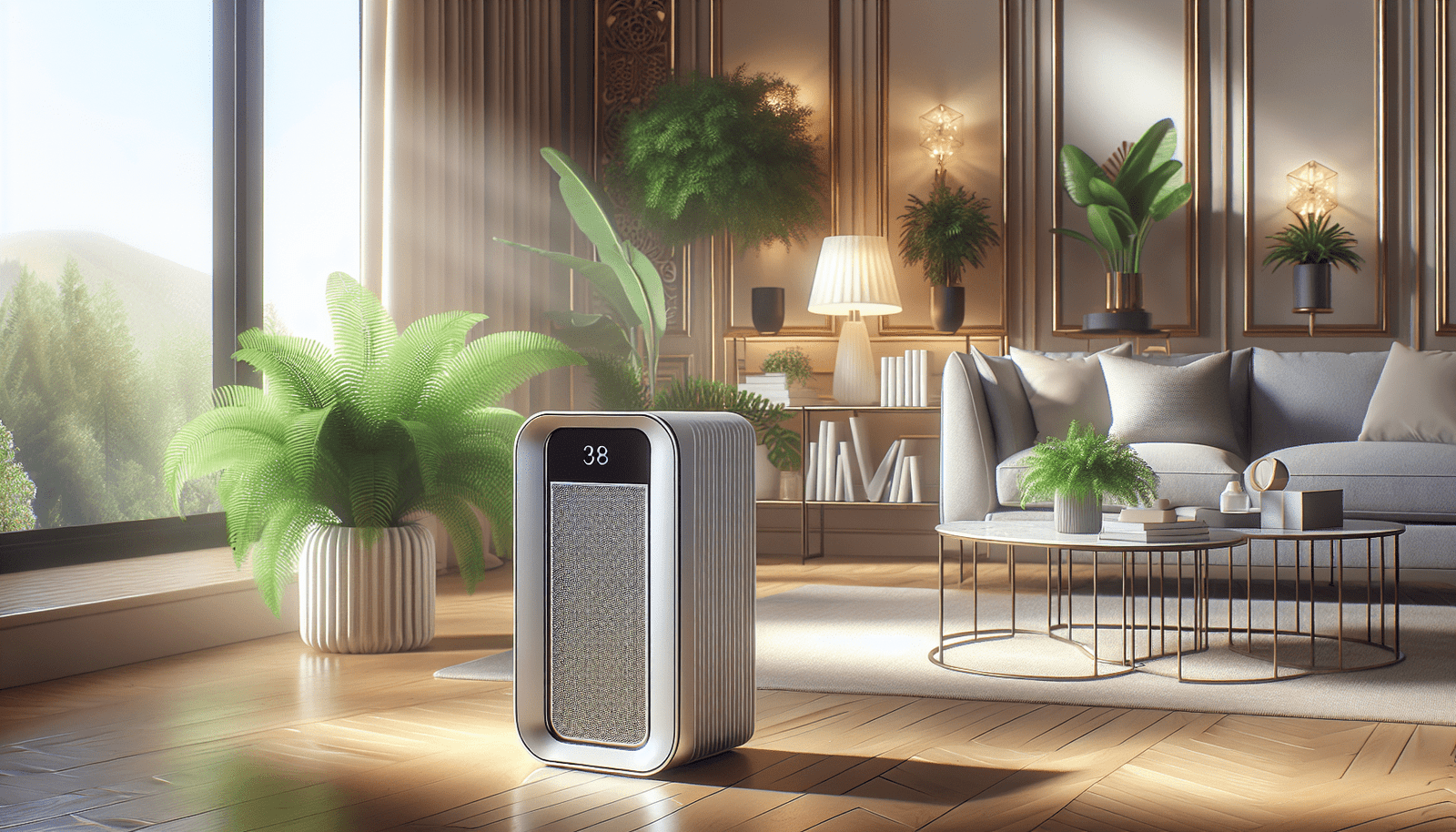How often do you think about the energy consumption of your home appliances? With so many gadgets working in the background, it’s easy to overlook the small but significant ways they impact your energy bill. One such appliance that has grown increasingly popular in recent years is the air purifier—specifically, the Dyson Air Purifier.
If you’re wondering how much power the Dyson Air Purifier consumes on a daily basis, you’re in the right place. Understanding this can not only help you budget your energy expenses but can also raise awareness about energy efficiency in your home. Let’s break it down step-by-step!
Understanding Power Consumption
Before diving right into the specifics of the Dyson Air Purifier, it’s vital to grasp how power consumption is generally measured. This sets the stage for understanding how your devices contribute to your daily energy use.
What is Wattage?
When discussing electricity usage, you may come across the term “wattage.” Wattage, measured in watts (W), indicates how much electrical power a device uses at any given moment. In simple terms, the higher the wattage, the more energy the device consumes.
How is Daily Consumption Calculated?
Daily power consumption can be evaluated using this formula:
[ \text = \left( \frac{\text} \right) \times \text ]
This calculation transforms the wattage into kilowatts (since energy companies bill by kilowatt-hour, or kWh) and multiplies that by the number of hours the device is operational during a day.
Dyson Air Purifier Power Specs
Now that you’ve got a good grip on power consumption basics, let’s delve into the technical specifications of the Dyson Air Purifier to understand its wattage and how it operates.
Average Wattage of Dyson Air Purifiers
The wattage for various models of Dyson Air Purifiers can differ. For example, most models have a wattage requirement that ranges from 40W to 60W while operating. To give you a clearer picture, here’s a breakdown of several popular models:
| Dyson Air Purifier Model | Wattage (W) |
|---|---|
| Dyson Pure Cool | 45W |
| Dyson Pure Hot + Cool | 55W |
| Dyson Pure Cool Link | 40W |
| Dyson TP01 | 56W |
This table should provide a quick glance at the power needs of different models.
Running Time and Its Impact
Now, how long do you typically use your Dyson Air Purifier per day? The daily power consumption heavily depends on how many hours you have it running. If you run your purifier 8 hours a day, let’s say you own a Dyson Pure Cool that requires 45W, you can calculate as follows:
[ \text = \left( \frac \right) \times 8 = 0.36 \text{ kWh} ]
Conversely, if you run it continuously for 24 hours:
[ \text = \left( \frac \right) \times 24 = 1.08 \text{ kWh} ]
Cost of Running Your Dyson Air Purifier
Once you have an understanding of daily power consumption, it’s time to connect that to real-world costs. To find out what you’ll be spending, you need to know your local electricity rate, typically expressed in cents per kilowatt-hour (kWh).
Example Calculation
Say your local electricity rate is $0.12 per kWh. For the calculations above:
-
Running the Dyson Pure Cool for 8 hours: [ \text = 0.36 , \text \times 0.12 \text{ USD/kWh} = 0.0432 \text{ USD} \approx 4.32 \text{ cents} ]
-
Running it continuously for 24 hours: [ \text = 1.08 , \text \times 0.12 \text{ USD/kWh} = 0.1296 \text{ USD} \approx 12.96 \text{ cents} ]
Having this information can really help you determine your energy budget effectively.
Factors Affecting Power Consumption
A number of variables can influence how much power your Dyson Air Purifier consumes daily. Let’s review a few key aspects.
Filter Type and Condition
The type and condition of the filter installed in your air purifier can significantly impact how hard the device has to work. A clogged filter forces the purifier to consume more energy as it struggles to push air through it. Regular maintenance and occasional filter changes are essential, not just for clean air but also for energy efficiency.
Operation Mode
Most Dyson Air Purifiers come with different operating modes, such as “Auto,” “Night,” or “Max” mode. Each mode has its wattage requirements:
- Auto Mode: Adjusts the fan speed based on the air quality, which could help save energy in some instances.
- Night Mode: Reduces noise and might lower power consumption, though it will still be less efficient if air quality is poor.
- Max Mode: Used for quick purification but consumes significantly more energy.
Understanding these modes can help you make informed choices about when to run your purifier, balancing air quality with energy costs.
Long-Term Energy Efficiency
When considering the daily power consumption of the Dyson Air Purifier, you might also think about its long-term energy efficiency. Here are some aspects to consider.
Energy Star Certification
Some models are designed to be energy-efficient and may carry an Energy Star certification. Products with this certification are vetted for performance and energy savings, making them a sound investment if energy consumption is a concern.
Smart Features
Many modern Dyson Air Purifiers are equipped with smart functionality. These features allow you to schedule your appliance or control it via an app, ensuring it runs only when necessary. Efficient use of smart technologies can further minimize power consumption.
Real-World Implications
Your understanding of how much power the Dyson Air Purifier consumes daily can lead to several practical outcomes in your life.
Budgeting for Energy Costs
By estimating the energy consumption of your air purifier, you can incorporate it into your overall budget. This awareness can help you make informed decisions on which appliances to use and when, optimizing for costs without sacrificing air quality.
Health and Wellbeing
While energy consumption is a tangible metric, there’s also the intangible benefit of better air quality. Using an air purifier not only promotes a healthier living environment but also contributes to improved focus and well-being.
Advocating for Sustainable Practices
Finally, being informed about energy usage encourages you to engage in broader conversations surrounding energy consumption and sustainability. You can share your newfound knowledge with friends and family, fostering a culture of energy awareness in your community.
The Bigger Picture: Air Purification and Sustainability
While energy consumption is significant, it’s also essential to look at the overall impact of using an air purifier in your home.
Improved Indoor Air Quality
Air purifiers, especially high-quality models like Dyson’s, can effectively remove pollutants, allergens, and particulates from the air. While it’s great to be conscious of energy expenses, don’t forget that superior air quality often outweighs the costs associated with running the device.
Environmental Considerations
In a world increasingly focused on environmental issues, the energy consumption of any electronic device is worth noting. Choosing energy-efficient products can help reduce your carbon footprint, thus aligning your lifestyle with sustainable living practices.
Making a Smart Purchase
When considering a Dyson Air Purifier, it’s worth comparing every model’s efficiency ratings and how well each one meets your specific needs. Understanding the energy consumption can drive the decision-making process, ultimately leading you to make a more informed purchase.
Conclusion
Being aware of how much power your Dyson Air Purifier consumes daily not only helps you manage your energy costs but also contributes to a healthier environment and living space. The goal is to balance effective air purification with responsible energy usage.
By keeping tabs on wattage, running times, and costs, you empower yourself to take control of your home’s energy consumption and promote a cleaner, healthier atmosphere. With informed choices, you can enjoy the benefits of a cleaner indoor environment without a hefty energy bill at the end of the month.
Hopefully, this breakdown has provided you with the information you need to understand your Dyson Air Purifier’s daily power consumption and how to manage it effectively. Whether you’re running it for a few hours a day or using it more extensively, every bit of knowledge can contribute to a more energy-efficient household.

